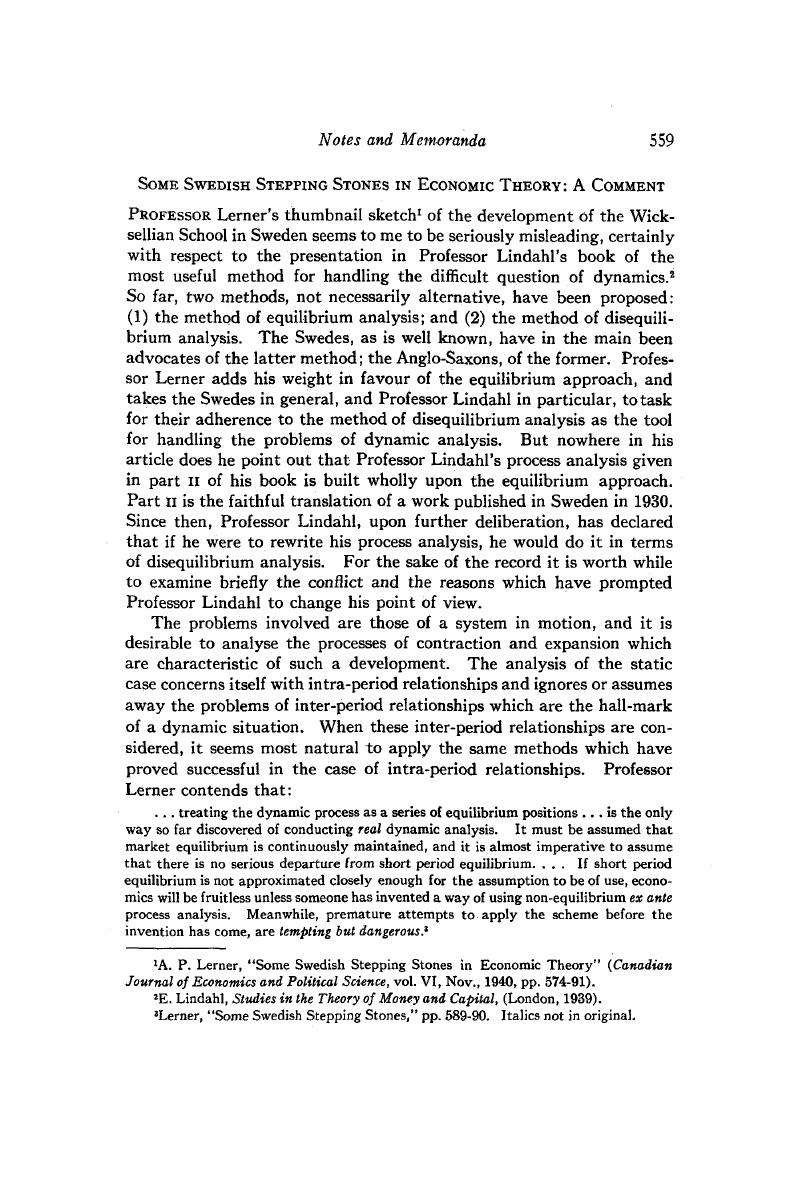Published online by Cambridge University Press: 07 November 2014

1 Lerner, A. P., “Some Swedish Stepping Stones in Economic Theory” (Canadian Journal of Economics and Political Science, vol. VI, 11, 1940, pp. 574–91Google Scholar).
2 Lindahl, E., Studies in the Theory of Money and Capital, (London, 1939).Google Scholar
3 Lerner, , “Some Swedish Stepping Stones,” pp. 589–90.Google Scholar Italics not in original.
4 Ibid., p. 587.
5 Myrdal, G., Monetary Equilibrium (London, Edinburgh, Glasgow, 1939), chap. v.Google Scholar This term, along with its correlative ex post, is relegated by Lerner to the limbo of “outworn” concepts, there to keep company with other museum pieces, such as the “quantity equation,” “velocity of circulation,” “the natural rate,” etc. This, if true, implies an inordinately high rate of obsolescence since these terms were first used by Dr. Myrdal, not in his Swedish version of Monetary Equilibrium which appeared in 1931, but in the German translation of it which appeared in 1933. This would give the terms an economically useful life of only eight years. The ideas had been developed by Dr.Myrdal, in his doctoral thesis, The Problem of Pricing and Change (Stockholm, 1927).Google Scholar The terms, I understand, were coined by Dr. Myrdal's German translator.
6 Lindahl, , Theory of Money and Capital, part II, pp. 245–68.Google Scholar This is the position he took in 1930 in the original Swedish version.
7 Ibid., pp. 251.
8 Lerner, A. P., “Alternative Formulations of the Theory of Interest” (Economic Journal, 06, 1938, pp. 215–16Google Scholar).
9 Lindahl, , Theory of Money and Capital, pp. 158–9.Google Scholar Italics in original.
10 Hicks, J. R., Value and Capital (Oxford, 1939), pp. 122–7.Google Scholar
11 Lindahl, , Theory of Money and Capital, pp. 260–1.Google Scholar
12 Ibid., pp. 68-9.
13 “Om penningteoretisk jamvikt” ( Ekonomisk Tidskrift, 1931, pp. 227–30Google Scholar). Dr. Myrdal's criticism was omitted in the German and English translations of Monetary Equilibrium because at the time Lindahl's discussion was not available outside the Swedish language.
14 Myrdal, Monetary Equilibrium.